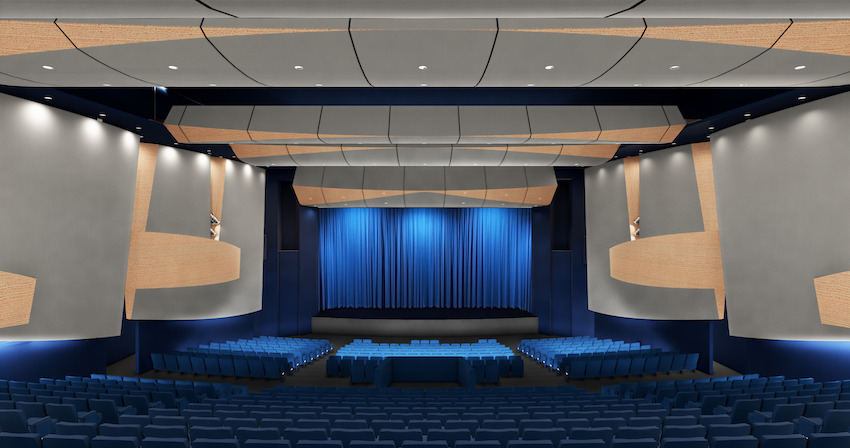Managing Sound In the Wide Open Spaces
The Importance of Acoustic and Reverberation Control in Large Indoor Spaces
![]() Continuing Education
Continuing Education
Use the following learning objectives to focus your study while reading this month’s Continuing Education article.
Learning Objectives - After reading this article, you will be able to:
- Describe reverberation time and how it impacts large spaces such as auditoriums and gyms.
- Explain how better acoustical design can affect the productivity and educational needs of occupants in large spaces.
- Discuss acoustical ceiling solutions that apply to larger spaces.
- List guidelines applicable to high-performance acoustical ceilings that support health and sustainability.
This webinar is part of the Acoustics Academy
Large spaces such as gyms, auditoriums, ballrooms, and lecture halls have specific needs for sound control. Sound must travel farther to reach everyone in the room, and reverberation must be handled well to avoid the noisy impacts of crowds. In some cases, the need for a lively acoustical environment requires striking a balance in which a comfortable level of noise can be attained. The ability for these spaces to deliver speech intelligibility, speech privacy, and appropriate noise comfort level has a major impact on the well-being, health, and productivity of people inhabiting these spaces. In this webinar, we will discuss the science of reverberation and the challenges it presents within large spaces. And, we will look at acoustical ceiling design solutions that can help address these issues of noise and clarity, leading to better indoor environmental quality that also meets the architectural vision.
Academic projects are notoriously acoustically challenging, with varied program requirements, multi-use spaces, and diverse user groups. One example is North Hollywood High School in Los Angeles. Los Angeles Unified School District (LAUSD) commissioned CO Architects to do a multi-phased, comprehensive modernization to the 96-year-old building, including adding a new state-of-the-art performing-arts auditorium. CO Architects Associate Principal Michael Stebbins, AIA, will discuss how sound control improves spaces’ flexibility, particularly in North Hollywood High School’s auditorium. The 800-seat theater will serve as a state-of-the-art performing arts center, a teaching environment for lighting and sound design, and become the new heart of the campus. Acoustical elements in the auditorium include curving reflector walls and ceiling clouds to optimize sound quality while providing warmth and durability. Additionally, variable and permanent acoustic solutions provide absorption and diffusion to allow for maximum flexibility and appropriate reverb time for both spoken work and music.
Armstrong World Industries acoustics expert Sean Browne will discuss how acoustical solutions for large spaces are tested, rated, and specified. He will also detail ASTM standards for testing, and the tools and guidelines used to design spaces that actually work. The presentations will be followed by a moderated discussion, addressing several key issues related to challenges and solutions of acoustic design in large spaces.
The presentations will be followed by a moderated discussion, addressing several key issues related to challenges and solutions of acoustic design in large spaces.

Courtesy of CO Architects

|
Michael Stebbins, AIA, is an associate principal at CO Architects in Los Angeles. He has more than 35 years of experience, specializing in institutional projects—including academic facilities, performing-arts centers, and museums. Michael joined CO Architects in 2015 and has managed many of the firm’s K-12 projects for Los Angeles Unified School District (LAUSD). He holds a Bachelor of Architecture from Iowa State University and a Master of Architecture from Southern California Institute of Architecture (SCI-Arc). Michael is also a certified yoga instructor. |

|
Sean Browne, Manager, Codes and Standards for Armstrong World Industries. Since 2001, Sean has worked in the Armstrong Research and Development group. Currently, he oversees the company's Codes & Standards Program and works to educate customers about the growing importance of acoustics and changing building codes and regulations. Browne is a member of the Acoustical Society of America (ASA), ASTM International, and ASHRAE. He holds engineering degrees from Florida State University and the University of Miami, is a frequent contributor to architectural and interior trade publications, and has been published in the journals of the International Symposium on Room Acoustics and the Acoustical Society of America. |
